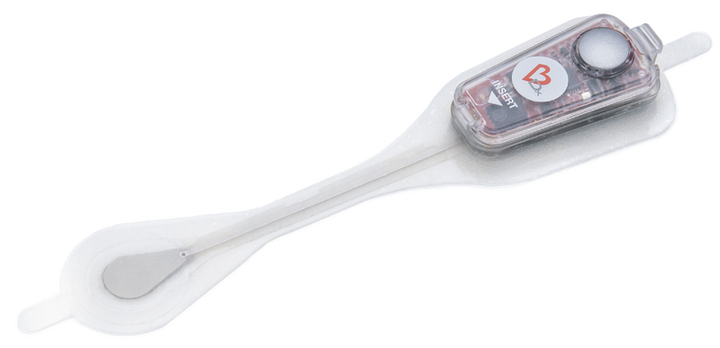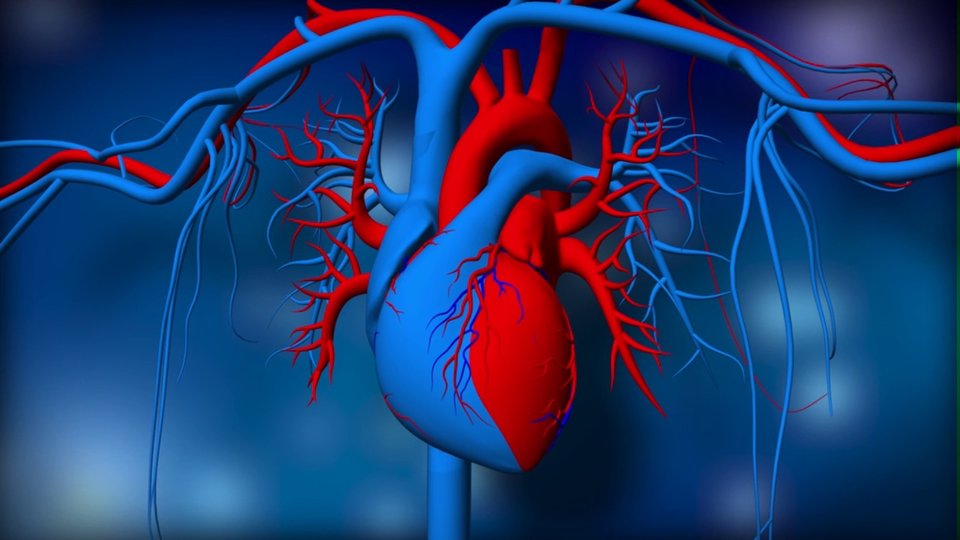






Register patient on BDxCONNECT portal, apply the CAM patch
24/7 monitoring, patient logs symptoms
CAM returned, ECG data uploaded to the cloud
CAM Report is generated by your clinic staff or BardyDx





Greater Visibility into Heartbeat Irregularities
BardyDx
The remote cardiac monitoring space is getting increasingly crowded but also rewarding for innovators who are using the challenge as an opportunity to take their offerings to new levels of patient-centricity, precision, and performance.
By Gergana Koleva
“Most monitors put electrodes in places that aren´t comfortable for women. The Carnation Ambulatory Monitor is specifically designed for women, it´s designed to be comfortable and discreet.”
The secret to the CAM´s effectiveness is its optimized technology, which employs a circuit design and uses advanced compression algorithms to process the signal, limiting signal-to-noise limitations to ensure a clear P-wave recording.

Bardy Diagnostics (BardyDx), a Seattle-based start-up led by renowned cardiac electrophysiologist Gust H. Bardy, MD, ranks high in the small cohort of cardiac ECG monitoring companies that welcome competition by turning an unmet market need into a tangible solution, and excel on first go. Its flagship product, the Carnation Ambulatory Monitor (CAM™) patch, is the only one in the nascent patch category focused on P-wave signalling as a potent telltale sign of arrhythmia. The P-wave is a small amplitude signal of the ECG originating in the atrium that is critical for accurate arrhythmia diagnosis and patient management.
“The P-wave represents atrial electrical activity and if you don´t see the atrial electrical activity, one can´t wholly define what the heart rhythm is from just the ventricular electrical activity. The P- and the R-waves are both important in any rhythm diagnosis, so one must be able to see the P-wave, and to do so requires a totally different engineering design of the way current ambulatory cardiac monitors capture the electric cardiogram,” says Dr. Bardy.
A practising electrophysiologist since 1983 Dr. Bardy has remained a keen advocate for advancing heart monitoring methods – a mission that became painfully personal after the sudden cardiac death of his wife, which he attributes to the suboptimal state of current diagnostic technologies – he founded BardyDx as a vehicle for introducing a device that allows greater visibility into heartbeat irregularities.
Historically, the P-wave – the main feature around which Bardy has based the concept and design of the CAM patch – is the most difficult signal to accurately record in the cardiac cycle. More than that, wearable heart monitors tend to present a particular burden for women because of the female chest anatomy, which can make using such devices comfortably a challenge. In a rapidly advancing field still largely dominated by innovators who are male – with medtech solutions similarly designed from a mostly male professional perspective – Bardy´s personal tragedy has served the dual purpose of inventing a far more sensitive device that also puts the spotlight on the underserved needs of female patients.
“Most monitors put electrodes in places that aren´t comfortable for women. The Carnation Ambulatory Monitor is specifically designed for women, it´s designed to be comfortable and discreet,” says Bardy. Through his loss and referring to his wife, he says he found inspiration to improve heart monitoring technology in the hopes of saving lives. “Lorraine had a complex disease and it would´ve been a challenge to detect her type of arrhythmia, but not an insurmountable challenge if one had the proper technology.”
P-wave focus
BardyDx´s edge
In separate head-to-head studies comparing the CAM patch against a traditional 3-lead Holter monitor and against its main competitor, iRhythm´s Zio patch, CAM´s technology won out in both cases in terms of diagnostic yield (both patch products are single-lead devices). In the former, physicians detected arrhythmia in 46% of participating patients when they wore the P-wave centric system compared to just 12% when the same patients had their heartbeat tracked by a Holter monitor. In the latter, physician reviewers concluded that the CAM patch yielded higher clarity of the ECG tracings and thus inspired greater confidence in the resulting diagnoses and clinical decisions. (Both patches performed equally in detecting atrial fibrillation.)
The secret to the CAM´s effectiveness is its optimized technology, which employs a circuit design and uses advanced compression algorithms to process the signal, limiting signal-to-noise limitations to ensure a clear P-wave recording. Once the 14-day period during which the patch is worn by the user has finished, patients return it to their physicians for their data to be uploaded and analysed. The uninterrupted nature of the recordings and their superb clarity enable physicians to see the onset and offset of potential arrhythmias, unlike ECG strips of much shorter duration produced by non-continuous cardiac monitors. A diagnostic report is then generated within two business days.
“If you look at the market, no one has nearly that many patents or any on a lot of the products that are out there. A lot of them are put together with off-the-shelf parts and there´s nothing proprietary about them,” says Nelson, making exception for three other companies with top products that enjoy high adoption among physicians. For that reason, he considers the majority of BardyDx´s peers in the patches space to be “distant really small players.”
BardyDx has raised, till date, over $70 million in funding. In the last 12-months it has expanded its sales force and grown the scale of its monitoring services, as well as jump-started new programs in augmented intelligence and visualization techniques.
For Bardy, who has devoted his career to imagining and engineering solutions to heart rhythm problems and has more than 240 patents, most of which power the inner workings of many of today’s cardiac rhythm management products and services, continued technological innovation in the remote monitoring space is as important as ever.
As the company continues to expand its footprint within the cardiac monitoring industry, the BardyDx team is driven by Bardy's compelling message: “For nearly 60 years, standard ECG engineering practices have over-processed the heart's electrical message to make machines’ ‘lives’ easier at the expense of losing details in the ECG. Such legacy engineering doesn't listen to what the heart is trying to tell us but rather tells the heart what we are willing to hear. At BardyDx, our pioneering technology focuses on revealing the cardiac rhythm message fully, and in so doing, allows for precise and meaningful patient management predicated on cardiac truth.”
Capital appeal
The CAM patch´s focus on optimizing P-wave signal capture and patient comfort, with an emphasis on female users, explains its recommended placement vertically in the middle of a patient´s chest – right above the sternum – which is helped by its ergonomic hourglass shape.
“We call it a P-wave centric monitor. It doesn´t just get a better look at atrial arrhythmias, it gets a much closer look at ventricular arrhythmias also, and it does that through a combination of the overall infrastructure, the way the circuit board is designed, and the signal processing, all of which is proprietary with over 60 patents on the technology,” Ken Nelson, BardyDx´s chief commercial officer, told Cardiology2.0.
Nelson, who joined BardyDx after helping BioTelemetry, iRhythm, and Guidant (the company acquired by Boston Scientific in 2006) scale up, has a long trajectory in medical device sales and an extensive knowledge of the cardiac monitoring landscape. He says there is a clear unmet need in the market for convenient wire-less monitors, and patch products such as BardyDx´s CAM and iRhythm´s Zio are a response to that need. “One of the things that I noticed in the implantable pacemaker and defibrillator world is that there is a significant number of patients indicated for an ICD that never receive one. Yet the statistic I´ve seen from the American Heart Association is that up to 80% of heart disease is treatable. Clearly there´s a problem with patients getting the treatment they need and a part of that could be that they´re not getting diagnosed properly. And it´s not that the physicians are missing – maybe there´s not great technology that accurately diagnoses what type of arrhythmias patients are having,” says Nelson, reflecting on the mismatch between cardiac disease prevalence and the diagnostic capacity of commonly used monitors. He recalls that conventionally such devices have been designed with wires, making them un-patient-friendly, which led to Holter monitors being rarely used for more than 24 hours.
“That creates a huge opportunity to advance patient care if you can come up with a more patient-friendly tool,” Nelson told this magazine.
Women- and patient-centric technology
“The P-wave represents atrial electrical activity and if you don´t see the atrial electrical activity, one can´t really define what the heart rhythm is from just the ventricular electrical activity. The P- and the R-waves are both important in any rhythm diagnosis, so one must see the P-wave, and to do so requires a totally different engineering design of the electric cardiogram.”
Gust Bardy MD, CEO and CMO

“Clearly there´s a problem with patients getting the treatment they need and a part of that could be that they´re not getting diagnosed properly. And it´s not that the physicians are missing – maybe there´s not great technology that accurately diagnoses what type of arrhythmias patients are having.”
Ken Nelson, Chief commercial officer







